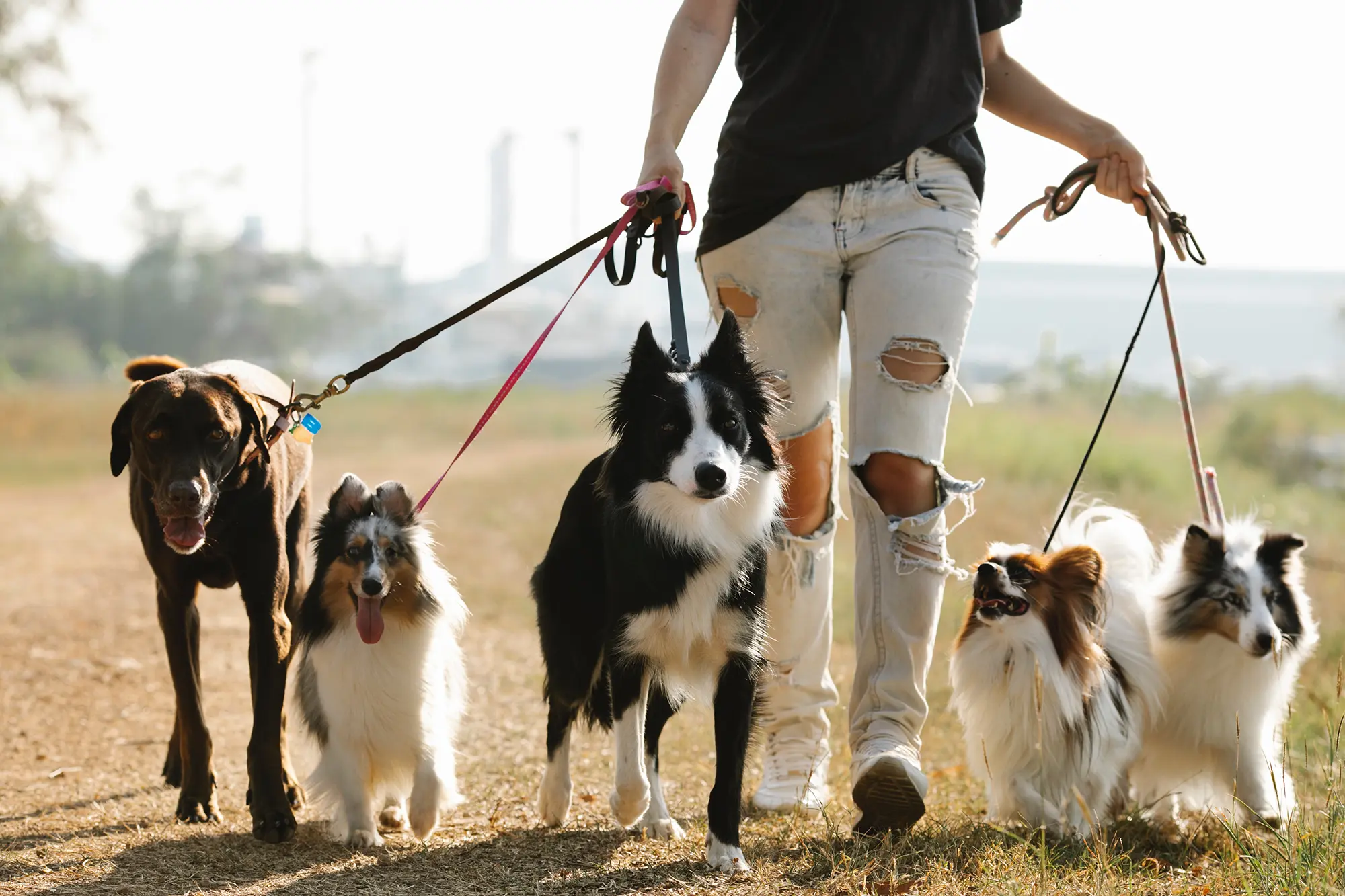what is your pet's poo telling you?
Author: PawPots Team
 07 Mar 2023
07 Mar 2023
 8 min
8 min As responsible parents, monitoring our pets' stools is the most important job we can do for them.
That being said, there are three main characteristics to consider when evaluating poop: consistency, color, and contents. It differs for dogs with an additional characteristic, a coat, and for cats with a smell. This will help you know whether or not your pet needs to go to the vet!
The Three Cs
1. Consistency (and Shape)
Cats
Normally, your cat’s stool should have a long, round shape, like a sausage. It should look firm but not too hard. Stools that resemble rock-hard pebbles or are difficult for your cat to pass are likely due to dehydration or a lack of fiber in their diet. Anything that does not have this defined firmness or shape is abnormal.
If your cat is experiencing diarrhea, it can be caused by a sudden change in their diet, hairballs, a microbial infection, or liver or kidney disease. Symptoms that last longer than 24 to 48 hours and/or are accompanied by other symptoms should be evaluated by a vet!
If their stool is between firm and watery, it might indicate a slightly upset stomach. In this case, you should also reach out to a veterinarian if their symptoms do not resolve within 24 to 48 hours and/or are accompanied by other unusual symptoms.
Dogs
The level of detail for dogs, on the other hand, varies.
Their stool is healthy when it’s dense and firm, but not dry. If their stool is dry or has pellet-like lumps, it’s typically a sign of severe constipation and dehydration. If your dog is having a hard time passing these poops, it could be a sign for you to keep tabs on their water intake.
Now, if you find yourself grabbing a mop and bucket to clean up "runny liquid," it could be an indication of mild diarrhea. This could be caused by anything in your pup’s diet; note anything new they’ve been ingesting. If this symptom persists—even after you put your pet on a bland diet—then you should take them to the vet (especially if you notice behavioral changes). Poop that can be placed between solids and liquids is another sign of diarrhea.
You’ll know your pup isn’t getting enough fiber if their stool is small and soft with clear edges; try feeding them some carrots in that case!
PawPots' Impact
Our freshly cooked meals are properly balanced with fiber, keeping both constipation and diarrhea at bay for both cats and dogs. Our food retains the natural moisture from whole meats and fresh veggies, making it easier to keep your pet hydrated beyond the water bowl! When switching to PawPots, however, it’s normal to notice that your pet is pooping less frequently and in smaller amounts. While you may be alarmed at first—particularly when transitioning from kibble—small, compact poop is actually a sign that your pet is properly digesting their meals and absorbing the proper nutrients! The result? Less waste is excreted, and your pet’s stool will appear more consistent in size and texture.
2. Color
Cats
For cats, normal stools are a deep brown. The appearance of different colors can be symptoms of various health issues, including:
Yellow, though normal for some diets, can suggest liver or gallbladder disease.
Red generally points to blood in the lower gastrointestinal tract or the colon and can also point to inflammatory bowel disease or blood clotting disorders.
Black, tarry stools (i.e., melena) are seen when blood is being digested, which means they most likely come from the upper digestive tract (such as from a sharp foreign object causing damage or a stomach ulcer).
Dogs
For dogs, normal stools are usually a light brown. Just like cats, drastic changes in color can indicate digestive or intestinal problems:
Grey, yellow, or orange stools are usually associated with gallbladder, liver, or pancreatic problems.
Green stools show your dog just loves to chew on grass and plants, but they can also be a sign of rat bait poisoning. If this symptom is accompanied by vomiting, it shows that there’s a serious internal issue. While eating grass seems innocent, excessive grass-eating is often a sign of anxiety or intestinal distress. Dogs will eat grass as an emetic, meaning they will intentionally eat it to vomit afterwards. Therefore, if you catch your dog eating grass, it might just mean they don't feel well. If this behavior persists on a daily basis, then it is best to contact your trusted veterinarian.
Red stools or stools with red streaks show signs of bleeding in the lower gastrointestinal tract, possibly due to an injury or inflammation of the gut. Other reasons, though less likely, are colitis or a tumor.
Black stools can be associated with bleeding in the upper gastrointestinal tract, such as the stomach or small intestine. It could also be a sign of an ulcer. Black stools are a relatively rare occurrence.
White stools signify that your pup’s diet is too high in calcium. This sometimes happens to dogs on a raw diet; a high amount of bone can lead to constipation. A coating of mucus can also make their poop look white.
Stools with white spots about the size of grains of rice could be an early sign of tapeworms. Work with your vet to get the necessary treatment (and also avoid contaminating other pets in the house).
Overall, our pets’ poop can tell us more about what’s going on inside their furry bodies! If you notice any of these color changes, don’t let too much time pass before you call your vet and let them know. They may want to see your pet ASAP! Also, ask if you should get a stool sample; the vet may want to evaluate it.
PawPots' Impact
As a loving parent, you can avoid false alarms by feeding your pet a healthy diet free from preservatives and artificial flavors. At PawPots, we only use fresh ingredients in our recipes. Human-grade and gently cooked, we offer your pets a nutritional balance according to their needs; your pet gets everything they need to thrive.
3. Contents
This may be the least attractive part of owning a pet, but it can be of great help to know whether or not your pet is eating something they shouldn’t be and if a vet visit is necessary!
As previously stated, your dog's stool may assist you in determining whether they have an infection or not. If you happen to identify white, rice-shaped flecks, this may be a sign of a parasitic infection, like tapeworms. Their stools may also contain grass, rocks, and other outside debris. You should also keep your furry friend away from trash, as they might ingest some plastic, which could harm them.
On the other hand, the most common thing found in cat feces is hair! Those little felines are well-known groomers, so this is completely normal. Excessive grooming, however, can be associated with itchiness or other diseases linked to excessive shedding, as well as anxiety.
Cats also love to play with string and other toys, so keep those away from them to avoid them injuring themselves. Just like dogs, cats’ stool can also help you know whether or not they have a tapeworm infection.
Coating for dogs
Mucus, a layer of lubricant coating your dog's stool to help it pass more easily, is produced during the digestive process. However, frequent slime-covered poop (i.e., an increase in mucus production) could be the result of inflammation caused by food intolerance or digestion problems. You’ll have to check in with your vet and see if you need to change your pet’s diet or get them on a specific treatment. Another thing to watch for is a change in behavior along with abnormal poop that does not resolve quickly.
Smell for cats
Cat poop has a distinctive smell, and a change could indicate a health problem!
A stinky litter box could be the result of a microbial infection, like bacteria or parasites. You’ll need to take them to the vet if this symptom is followed by a lack of appetite or vomiting.
You should also be careful when handling cat poop due to its association with the parasite Toxoplasma Gondii. Clean their litter box daily to keep it at bay.
In Conclusion…
Just like their human guardians, pets are what they eat! Now you know how to identify potential health issues by just looking at the evidence. It’s important to know to contact your vet when you have any doubts or notice any of the changes mentioned.
That being said, it’s important to know that the most important component of a healthy stool is a balanced diet for your pet. What goes out reflects what comes in.
At PawPots, we offer delicious, human-grade meals that will provide your pet with balanced nutrition. Formulated with the help of veterinary nutritionists, we work on customizing our food according to your pet’s unique needs.
References
1. Donovan, L. (n.d.). How to Tell If Your Dog’s Poop Is Healthy – American Kennel Club. American Kennel Club.
2. How to Understand Your Cat’s Stool [Cat Poop Chart] | Dutch. (n.d.). How to Understand Your Cat’s Stool [Cat Poop Chart] | Dutch.
3. The Scoop on Cat Poop. (2021, February 7). WebMD.

Give Back The Love
Show your love to your pets with our high-quality, delicious and healthy meals! Show your love to your pets with our high-
quality, delicious and
healthy meals!




